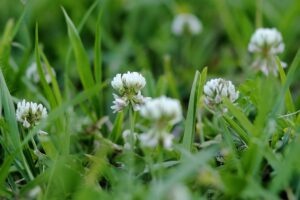Many gardeners worldwide still think that mixing flowers with vegetables is borderline preposterous. But there are plenty of reasons to bring these seemingly contradictory plants together!
For example, when you crown the already beautiful budding vegetables with glamorous blooms, you give your garden a much more natural (and stunning) look. Not only that – by breaking the established gardening “rules”, you can also expect a much more bountiful harvest in return!

1. Why Mix Flowers and Veggies to Begin With?
If you have been doing exterior planting and gardening by the book for as long as you can remember, you may not immediately welcome this idea with open arms. But just stop and think for a second.
As you probably know, flowers act as irresistible magnets for butterflies, bees, birds, and other useful pollinators. According to professional grower & essential oils producers Galen N, pollen is necessary for your veggies’ good health – if not properly pollinated, the blossoms of many crops will start to rot or won’t fully develop.
Certain flower species also act as bodyguards against the countless pests who will try to snack on the fruits of your hard labour.
Companion plants like borage, for example, are perfect for fending off tomato hornworms, and its light, the cucumber-like taste will also serve you well in the kitchen. Sunflowers, on the other hand, are great at attracting aphids and keeping them away from your crops.
Last, but not least, combining vegetable plants and flowers together often results in a breathtaking display of colours.
For example, you can plant a motley sea of summer annuals and mix those with neat rows of leeks or purple-leaved cabbages, whose colours will pervade even during the winter. Or, if your workspace is limited, you may opt for climbing vegetable plants, such as cherry tomatoes or climbing spinach, and combine them with flamboyant stripes of marigolds or petunias, or other trellis climbing plants like a sweet pea.

2. A Few Unwritten Rules That You Should Follow
Think carefully about which plants you want to include in your garden before you start planting the seeds.
For example, look for flowers that are not only pleasing to the eye but can also fully develop without having to shower them with chemical pesticides. You can plant some low-maintenance perennials to ease your gardening work. An editable garden can also be the best place for relaxing and sitting outside. You can add outdoor furniture in your garden for sitting and enjoy the green space.
This way, you won’t accidentally spray your veggies with God knows what and give the friendly pollinators a good reason to stick around.
A bit of extra to keep in mind are the growing conditions, under which your plants will thrive. In other words, if you wish to paint your garden with the inviting hues of begonias and amethyst flowers, then you need to find them, suitable shade-tolerant partners, such as beets, broccoli, carrots, or potatoes.
Conversely, if you are keen on growing tomatoes, peppers, or cucumbers in your yard, then adorn them with rosemary, lavender, or other flowers that can withstand direct sunlight.
When you consider adding ornamental flowers to your vegetable garden, don’t just merely use them as an outline for your borders. Instead, carefully plant as many of them as you can among the vegetables. This will not only make your garden way more aesthetically pleasing but also provide an abundance of food that the beneficial insects need to reproduce and fight off aphids and other pests.
There are also indicator plants that are really sensitive to their surroundings and environment, which makes them perfect for detecting problems around your garden.

3. The Science Behind Finding the Perfect Bloom Match
At first, this flower planting experiment might leave you dazed and confused. After all, won’t flowers and veggies end up competing for space and precious sunlight?
Not if you choose the right combo. But first, here are some general guidelines to help you better grasp the concept:
- Always keep in mind the height and width of each individual flower and veggie. To learn just how tall your plants can get, check the information on its seed packet or nursery tag;
- Try to combine plants of different colours, shapes, and textures to create certain themes and recurrent patterns in your garden. For example, you can mix & match neatly-looking basils with sprawling squash veggies or poppies and irises with corn or onions;
- Maintain your garden-fresh regardless of the season by planting vegetation with varied blooming times. This way, you will always have something beautiful to look at, while simultaneously providing the local beneficial insects with sufficient supply of pollen and nectar.
Now that we’ve taken a quick look at how to plan your garden layout, what blooms should you actually plant?
Why, the flowers that attract the most birds, bees, and butterflies, of course! However, not all beneficial insects like the same type of blossoms, says Pol Bishop, a gardening and landscaping expert at Fantastic Gardeners (London), so try to introduce as much variety as possible. A good place to start is the daisy family and its cosmos, marigold, and coneflower varieties. And here are two gardening ideas to get you going:
- If purple is your colour of choice and you have lots of eggplants, bush beans, and lettuces, add a few stripes of alyssum to create a garden straight out of a sci-fi film;
- For a more cheerful palette, a dash of orange calendulas will blend in perfectly with brightly-hued veggies, such as carrots, beets, or kale.
It’s not that hard to achieve harmony between flowering and edible plants. Just remember to enough growing space, combine with the right companion plants, and carefully plan your planting. Follow these simples rules and you’ll succeed in creating your edible landscape.


